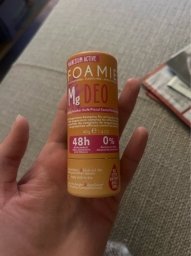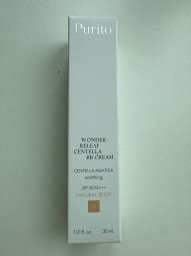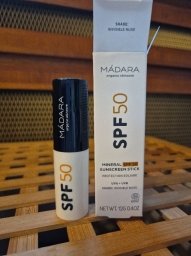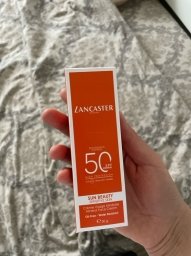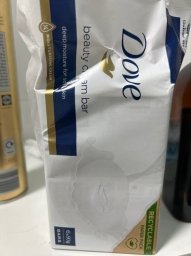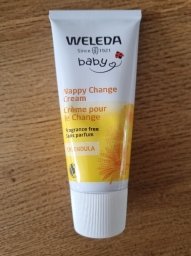 "Low penalty" in all categories.
"Low penalty" in all categories.
- Origin(s): Mineral
- Other languages: Cink-oxid, Cinkov oksid, Ossido di zinco, Oxid de zinc, Oxid zinečnatý, Oxid zinočnatý, Oxyde de zinc, Tlenek cynku, Zinkoxid, Zinkoxide, Çinko oksit, Óxido de zinc, Óxido de zinco, Цинк оксид, Цинков оксид, תחמוצת אבץ, أكسيد الزنك, 酸化亜鉛, 산화 아연
- INCI name: ZINC OXIDE
- EINECS/ELINCS number: 215-222-5
- Classification: Regulated, UV mineral filter
- Organic-compatible (COSMOS Reference)
Namely
Zinc oxide is a mineral used in cosmetics as a white colourant (CI 77947) or as a UV filter. Its authorisation as a UV filter is recent, following a European Union directive in April 2016. It allowed for organic use.
"On 23 September 2014, the Scientific Committee on Consumer Safety (SCCS) concluded that zinc oxide is safe when used as a colourant in its non-nano uncoated form in cosmetic products for application
application. However, the SCCS also considered that, given the pulmonary inflammation caused by zinc oxide particles after inhalation, zinc oxide in cosmetic products likely to expose the consumer's lungs to zinc oxide by inhalation is a cause for concern". : Extract from the EU regulation of 3 August 2017.
Following this opinion, Europe has banned all use of Zinc Oxide in spray cosmetics since 24 February 2018.
"On 23 September 2014, the Scientific Committee on Consumer Safety (SCCS) concluded that zinc oxide is safe when used as a colourant in its non-nano uncoated form in cosmetic products for application
application. However, the SCCS also considered that, given the pulmonary inflammation caused by zinc oxide particles after inhalation, zinc oxide in cosmetic products likely to expose the consumer's lungs to zinc oxide by inhalation is a cause for concern". : Extract from the EU regulation of 3 August 2017.
Following this opinion, Europe has banned all use of Zinc Oxide in spray cosmetics since 24 February 2018.
Restriction in Europe:
IV/144, VI/30, VI/30a
APPENDIX VI: UV Filters
Restrictions for Zinc Oxide (Non NANO) in UV Filter
Maximum permitted concentration: 25%.
Do not use in applications that may lead to exposure of the end-user's lungs by inhalation.
Restrictions for Zinc Oxide (NANO) in UV Filters
Maximum permitted concentration: 25%.
Do not use in applications that may lead to exposure of the end-user's lungs by inhalation.
Only nanomaterials with the following characteristics are permitted:
- Purity ≥ 96 %, with a wurtzite crystal structure and having the physical appearance of rod-shaped or star-shaped groupings and/or isometric forms, with impurities consisting only of carbon dioxide and water, while all other impurities are less than 1 % in total.
- Median diameter of the numerical particle size distribution D50 (50 % of the number below this diameter) > 30 nm and D1 (1 % below this size) > 20 nm
- Solubility in water < 50 mg/l.
- Uncoated or coated with triethoxycaprylylsilane, dimethicone, dimethoxydiphenylsilanetriethoxycaprylylsilane polymer or triethoxyoctylsilane.
APPENDIX VI: UV Filters
Restrictions for Zinc Oxide (Non NANO) in UV Filter
Maximum permitted concentration: 25%.
Do not use in applications that may lead to exposure of the end-user's lungs by inhalation.
Restrictions for Zinc Oxide (NANO) in UV Filters
Maximum permitted concentration: 25%.
Do not use in applications that may lead to exposure of the end-user's lungs by inhalation.
Only nanomaterials with the following characteristics are permitted:
- Purity ≥ 96 %, with a wurtzite crystal structure and having the physical appearance of rod-shaped or star-shaped groupings and/or isometric forms, with impurities consisting only of carbon dioxide and water, while all other impurities are less than 1 % in total.
- Median diameter of the numerical particle size distribution D50 (50 % of the number below this diameter) > 30 nm and D1 (1 % below this size) > 20 nm
- Solubility in water < 50 mg/l.
- Uncoated or coated with triethoxycaprylylsilane, dimethicone, dimethoxydiphenylsilanetriethoxycaprylylsilane polymer or triethoxyoctylsilane.
Its functions (INCI)
- Antimicrobial : Helps slowing the growth of micro-organisms on the skin and counteracts the development of microbes
- Bulking : Reduces apparent cosmetics density.
- Cosmetic colorant : Color cosmetics and / or give a color to the skin
- Oral care/hygiene agent : Provides cosmetic effects to the oral cavity (cleaning, deodorization and protection)
- Skin protecting : Helps to avoid the harmful effects of external factors on the skin
- Stabilising : Improves ingredients or stability of the formula and shelf life
- Uv absorber : Protects the cosmetic product from UV-light effects
- Uv filter : Filters certain UV rays to protect the skin or hair from the harmful effects of these rays.
This ingredient is present in 1.65% of cosmetics.
Products that contains it

